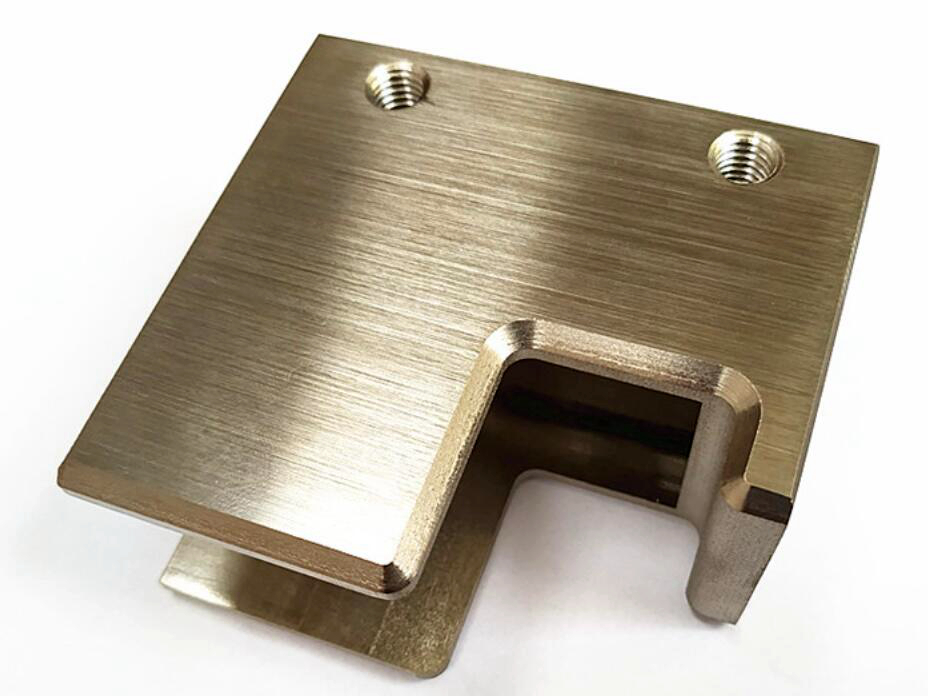Brushed Finishes: Aesthetic and Functional Applications
Introduction
Brushed finishing is a widely used mechanical surface treatment process renowned for creating distinctive aesthetic textures and improving the functional characteristics of metal parts. Using controlled abrasion techniques, brushed finishes produce uniform, satin-like surfaces that mask fingerprints, scratches, and imperfections, significantly enhancing visual appeal and durability.
Globally, brushed finishes have experienced increasing popularity across industries such as automotive, consumer electronics, architecture, and kitchen appliances. Their dual advantages of attractive appearance and improved functional properties, like corrosion and scratch resistance, make brushed finishes indispensable for products demanding both style and robustness.
Brushed Finishing Process Overview
Key Steps in Pretreatment
Thorough cleaning and degreasing to remove contaminants
Initial surface leveling or grinding for uniformity
Selection of abrasive materials and equipment (abrasive belts, wheels)
Comparison of Core Technologies (using tables)
Technology | Abrasive Type | Surface Roughness Achievable | Typical Applications | Efficiency |
|---|---|---|---|---|
Manual Brushing | Abrasive pads, Scotch-Brite™ | Moderate (Ra 0.8–2.0 µm) | Decorative items, limited production | Low-Moderate |
Mechanical Brushing | Belt sanding machines | Moderate-Fine (Ra 0.4–1.5 µm) | Appliances, automotive trims | High |
Robotic Brushing | Automated abrasive wheels | Fine & consistent (Ra 0.2–1.0 µm) | High-end consumer electronics, automotive interiors | Very High |
Post-processing and Optimization
Surface inspection and final abrasive pass adjustments
Application of protective clear coatings or sealants for corrosion resistance
Cleaning and packaging to maintain surface integrity
Brushed Finishes: Advantages and Limitations
Brief Introduction: Brushed finishes provide excellent aesthetic value and effectively conceal surface imperfections, enhancing durability. However, brushed surfaces can require additional protective treatments to maintain corrosion resistance and prevent dirt accumulation in textured patterns.
Property | Advantage / Limitation | Remarks and Typical Values |
|---|---|---|
Aesthetic Quality | Distinctive, attractive appearance | Satin-like finish, uniform texture |
Surface Imperfection Masking | Effectively hides minor scratches & fingerprints | Surface imperfections visually reduced >90% |
Corrosion Resistance | Moderate without protective coating | ASTM B117 Salt Spray Test: typically 200–400 hrs uncoated |
Scratch Resistance | Good improvement over untreated surfaces | Enhanced scratch durability and damage concealment |
Chemical Stability | Neutral; depends on post-treatment | Typically requires protective coating for maximum stability |
Maintenance Ease | Requires periodic cleaning | Easily cleaned; avoids visible smudges and stains |
Industrial Applications of Brushed Finishes
Examples include:
Consumer Electronics Brushed finishes in consumer electronics deliver elegant aesthetics and improved resistance to fingerprint marks on device casings (fingerprint visibility reduced by up to 80%).
Automotive Industry In the automotive sector, brushed metal trims and panels enhance interior and exterior aesthetics, offering improved scratch resistance (surface durability increased by 40–60%).
Architecture & Construction For architectural components, brushed finishes provide a modern look, masking surface imperfections and offering superior longevity on stainless steel or aluminum panels.
Kitchen Appliance Industry Kitchen appliances widely utilize brushed stainless steel surfaces, offering appealing aesthetics and improved durability, particularly resisting fingerprints and stains (surface cleanliness improved by 70–90%).
Brushed Finishing Process Selection Guide
Material Adaptability Matrix
Substrate Type | Manufacturing Process | Recommended Brushing Process | Performance Gain Focus |
|---|---|---|---|
Mechanical or Robotic Brushing | Aesthetic quality, fingerprint resistance | ||
Mechanical Brushing | Corrosion resistance, improved aesthetics | ||
Manual or Mechanical Brushing | Enhanced surface appearance & durability | ||
Robotic Brushing | Uniform surface quality, visual consistency |
Key Criteria for Evaluating Brushed Finishing Suppliers
Equipment Capability: Evaluate capability for consistent abrasion control, machinery automation (robotic systems), and finish uniformity.
Process Certification: Confirm adherence to quality standards (ISO 9001, ASTM surface finish standards) for reproducibility and quality assurance.
Test Reports: Require surface roughness measurements, corrosion tests (ASTM B117), and durability testing documentation.
Surface Treatment Technology Classification Matrix
Technology | Main Function (Specific & Comprehensive) | Key Features | Advantages |
|---|---|---|---|
Aesthetic enhancement, imperfection masking, moderate corrosion resistance | Roughness: Ra 0.2–2.0 µm, improved fingerprint resistance (>80%) | Elegant appearance, improved durability | |
Surface cleaning, roughening | Roughness Ra: 1.0–5.0 µm, ASTM D4417 | High efficiency, excellent adhesion | |
Surface smoothing, corrosion resistance | Surface roughness Ra <0.2 µm achievable | Ultra-smooth, superior corrosion resistance | |
Corrosion protection, aesthetics | Thickness: 50–150 µm, Impact resistance >100 kg·cm | Durable finish, excellent UV stability |
Technical Suitability Assessment (Brushed Finishes-Specific)
Four-Dimensional Assessment Model:
Material Compatibility: Ideal for stainless steel, aluminum, copper, zinc, and other metal alloys; selection based on material hardness and final application.
Performance Requirements: Provides aesthetic quality (Ra 0.2–2.0 µm), masks surface defects effectively, and moderately improves corrosion resistance and durability.
Process Economics: Cost-effective with automated brushing for high-volume manufacturing; lower capital investment compared to chemical finishing processes.
Environmental and Safety Impact: Environmentally friendly with minimal waste; requires standard dust extraction and personal protective equipment to manage abrasives.
FAQ (Frequently Asked Questions):
What metals are suitable for brushed finishes?
Does brushing affect metal corrosion resistance?
How durable are brushed finishes in outdoor environments?
What is the typical roughness achieved by brushed finishes?
Can brushed finishes be combined with other treatments?

